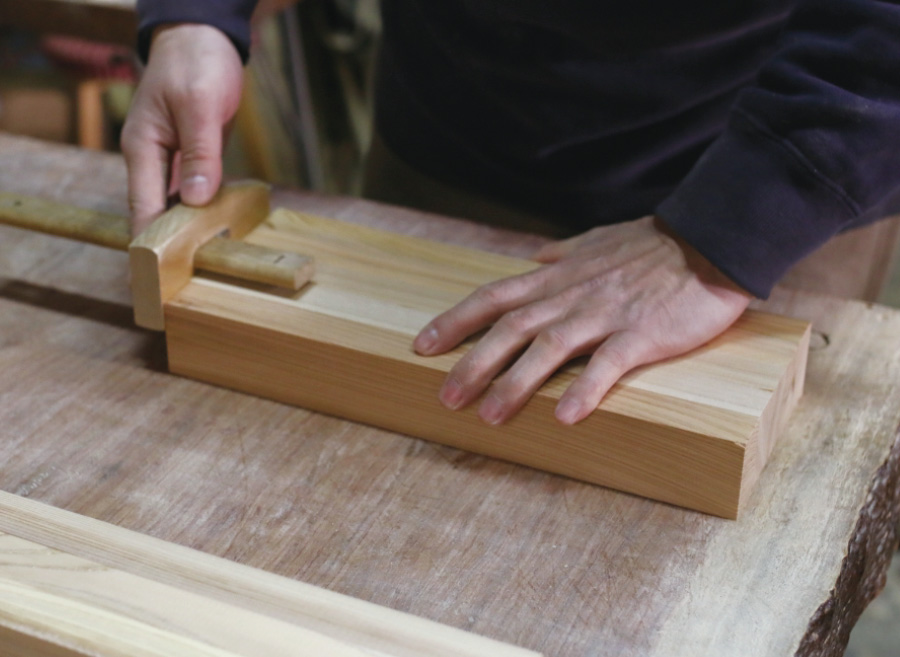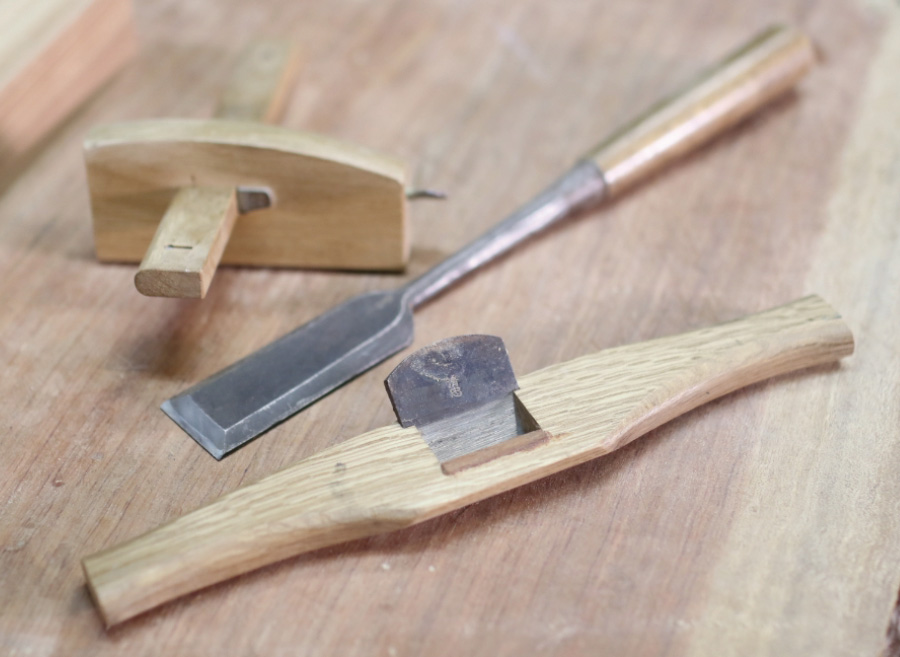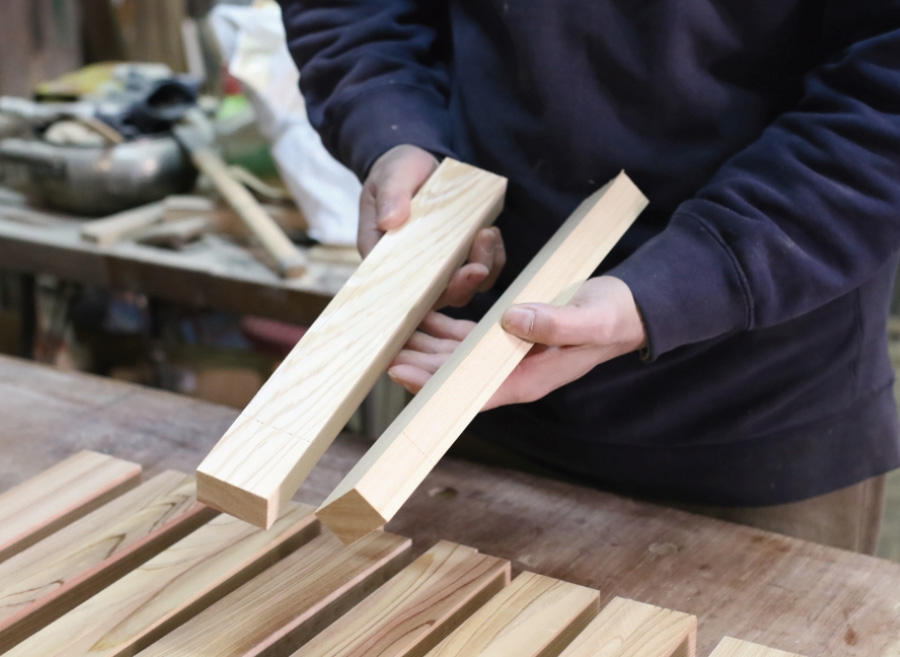Sendai tansu is the fruit of three craftsmen’s skills
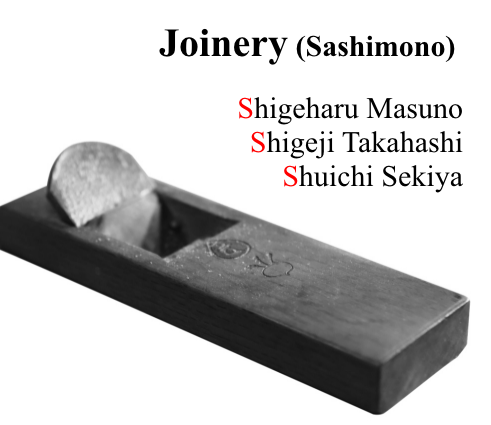
Strength Born from Precision Craftsmanship
Joinery is the foundation of Sendai Tansu. Because these chests are meant to last for generations, flawless precision is essential. Every part must function smoothly—drawers that glide, frames that don’t warp over time. The joinery artisan carefully studies the natural qualities of the wood, from selection to assembly, crafting a solid structure with meticulous attention even to unseen details. This creates tansu that can be treasured and used for decades.
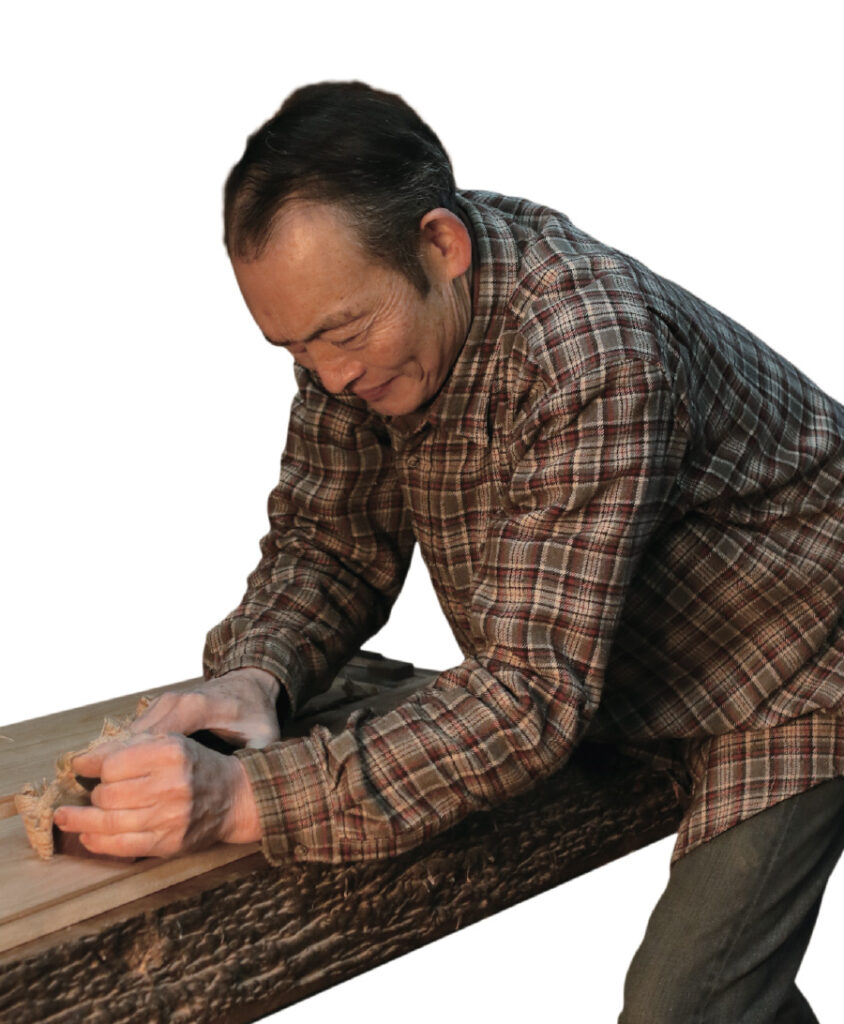
Craftsman File ①
Sashimono Artisan
Sashimono Artisan
Mokukōsha
Shigeharu Masuno
“I was inspired by the work of Tatsuaki Kuroda, a Living National Treasure. His designs were unlike anyone else’s—elegant and bold, even gaining the admiration of the imperial family. That’s when I knew I wanted to become a furniture craftsman.
At first, I wanted to make large pieces. I visited many master craftsmen across Tokyo, but few focused on large-scale furniture. So after graduating high school, I came to Sendai—because of Sendai Tansu, renowned for its scale and beauty. That’s what led me down this path.
Though I learned the techniques of joinery in Sendai, I was heavily influenced by observing Living National Treasures in Tokyo. I focused on efficiency and innovation—how to make high-quality pieces faster, using machinery where appropriate.
I never use plywood. I personally purchase whole logs and create everything from scratch. For me, true craftsmanship means protecting the basics, not clinging to flashy details. If the wood is beautiful, the finished piece will have value. Originally, I thought I’d return to Tokyo after 4–5 years. But as I worked here, I realized how important it was to preserve the legacy of Sendai Tansu. Now, I’m committed to safeguarding this cultural tradition.”
At first, I wanted to make large pieces. I visited many master craftsmen across Tokyo, but few focused on large-scale furniture. So after graduating high school, I came to Sendai—because of Sendai Tansu, renowned for its scale and beauty. That’s what led me down this path.
Though I learned the techniques of joinery in Sendai, I was heavily influenced by observing Living National Treasures in Tokyo. I focused on efficiency and innovation—how to make high-quality pieces faster, using machinery where appropriate.
I never use plywood. I personally purchase whole logs and create everything from scratch. For me, true craftsmanship means protecting the basics, not clinging to flashy details. If the wood is beautiful, the finished piece will have value. Originally, I thought I’d return to Tokyo after 4–5 years. But as I worked here, I realized how important it was to preserve the legacy of Sendai Tansu. Now, I’m committed to safeguarding this cultural tradition.”

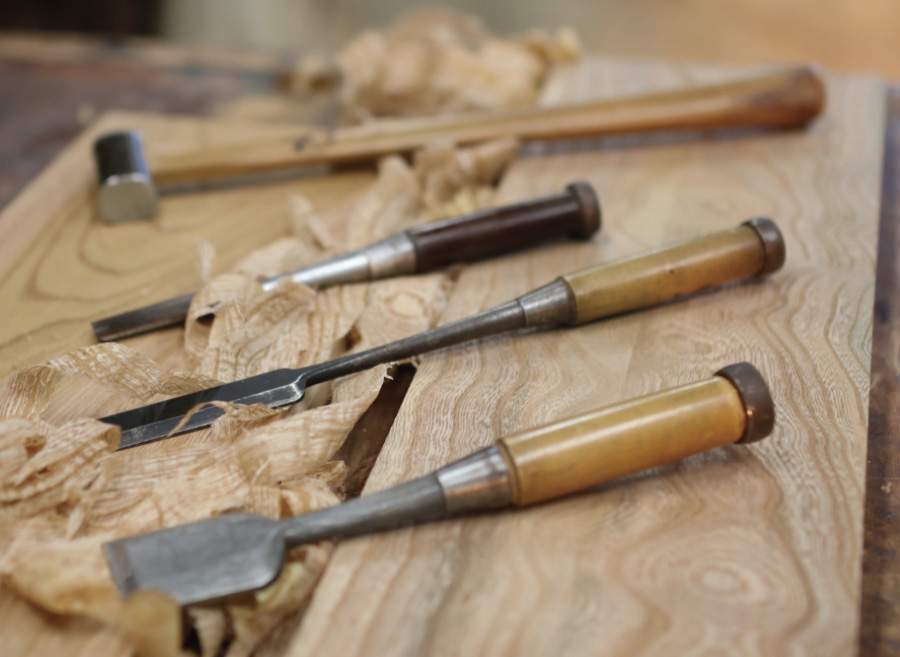
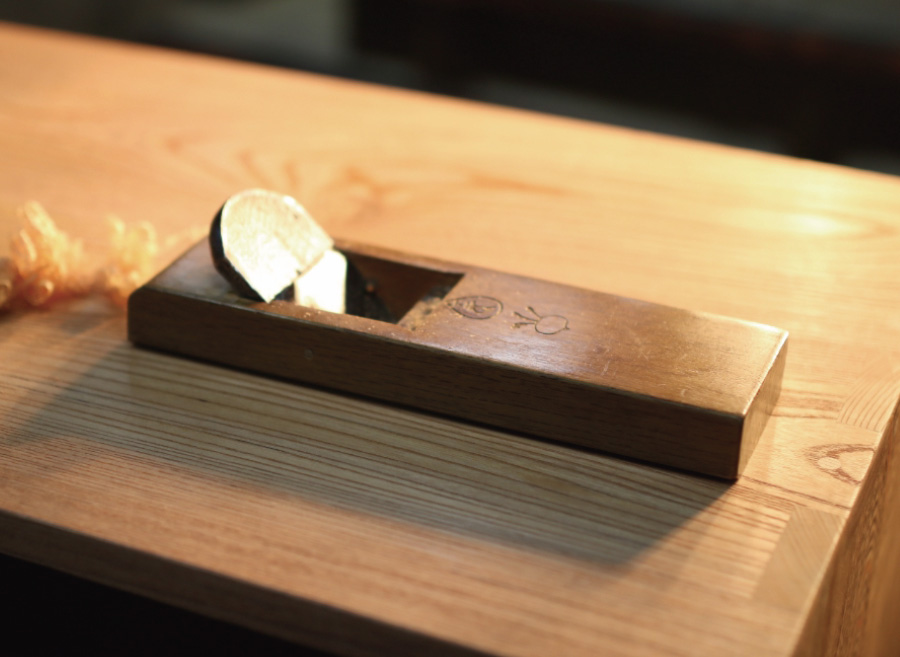
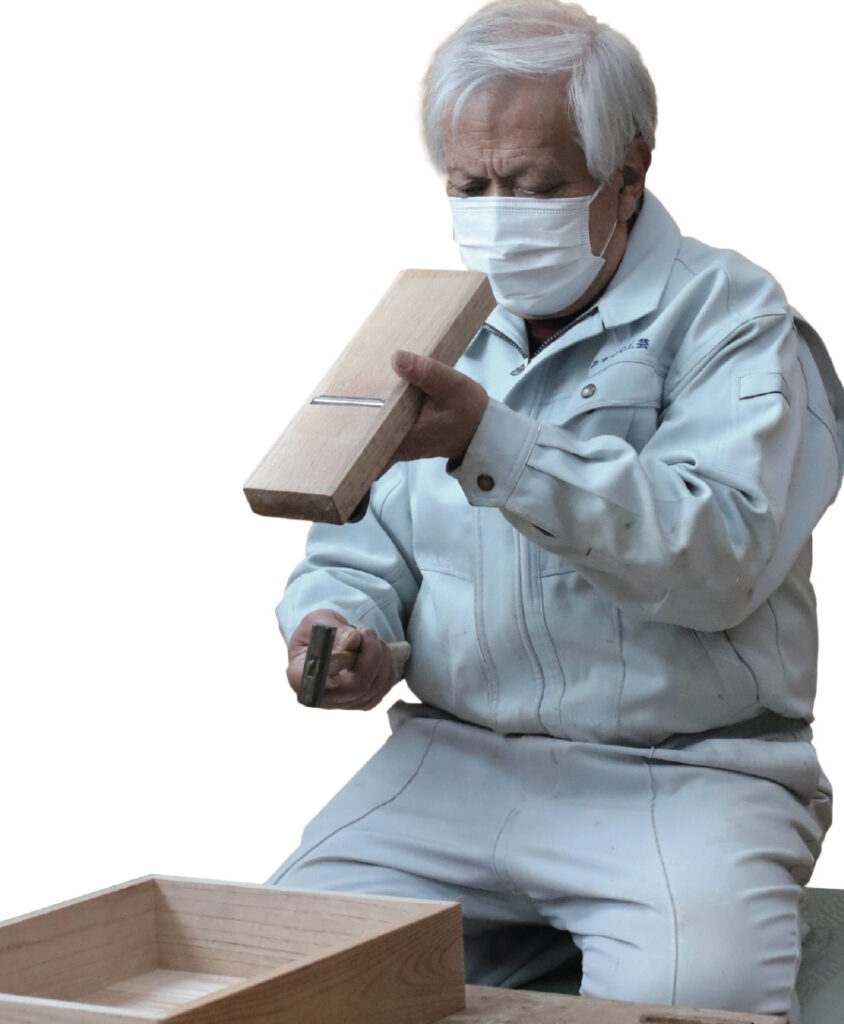
Craftsman File ②
Sashimono Artisan
Michinoku Kōgei
Shigeji Takahashi
“My journey started unexpectedly—after winning a school marathon, I received a desk as a prize from a local furniture shop. The shop owner wanted to hire me. I always enjoyed making things, and my teacher encouraged me to give it a try. That’s how I entered this profession.
The most important thing in crafting tansu is the material. You have to be able to judge the wood—will it warp in the future? How stable is it? Without that skill, you can’t build long-lasting furniture.
I’ve spent my life making furniture. A well-made tansu speaks without words. Passed from grandparents to grandchildren, it carries family stories. Sendai Tansu can easily last over 500 years.
I’m particular about materials, sourcing raw timber myself from places like Fukushima, Iwate, and Yamagata. In addition to furniture, I’ve also made offertory boxes for shrines and platforms for temples.
I hope the tansu I make will be passed down across generations—three, four, even five—carrying family bonds through time. That’s what keeps me going after all these years. The greatest joy is seeing customers truly happy with what I’ve made.”
The most important thing in crafting tansu is the material. You have to be able to judge the wood—will it warp in the future? How stable is it? Without that skill, you can’t build long-lasting furniture.
I’ve spent my life making furniture. A well-made tansu speaks without words. Passed from grandparents to grandchildren, it carries family stories. Sendai Tansu can easily last over 500 years.
I’m particular about materials, sourcing raw timber myself from places like Fukushima, Iwate, and Yamagata. In addition to furniture, I’ve also made offertory boxes for shrines and platforms for temples.
I hope the tansu I make will be passed down across generations—three, four, even five—carrying family bonds through time. That’s what keeps me going after all these years. The greatest joy is seeing customers truly happy with what I’ve made.”
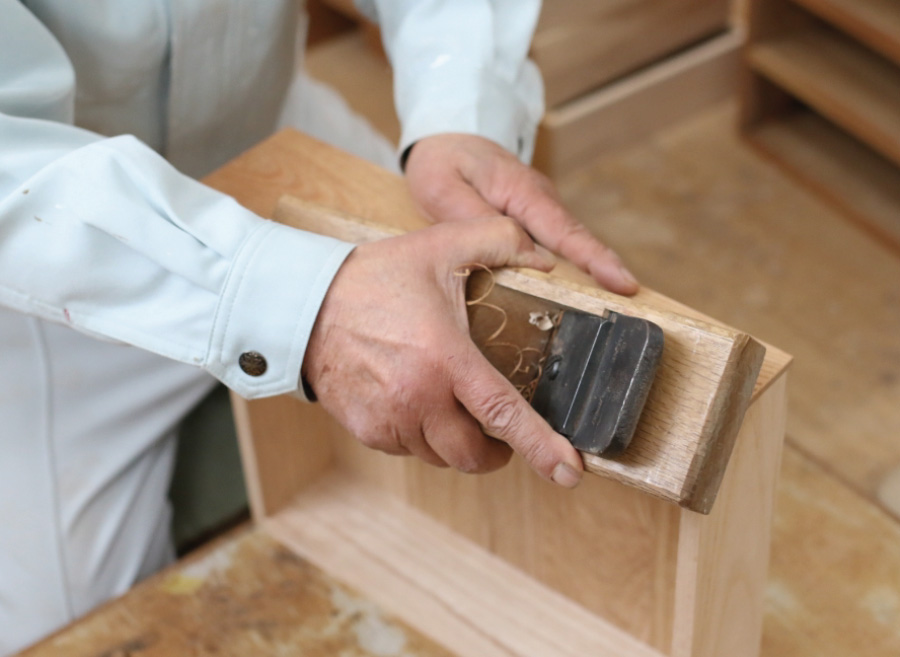
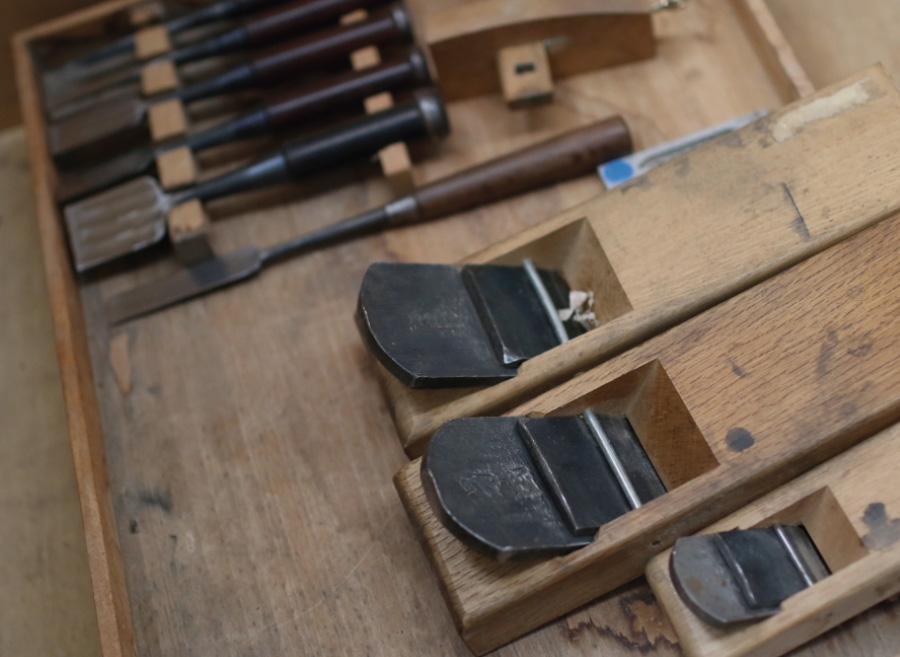
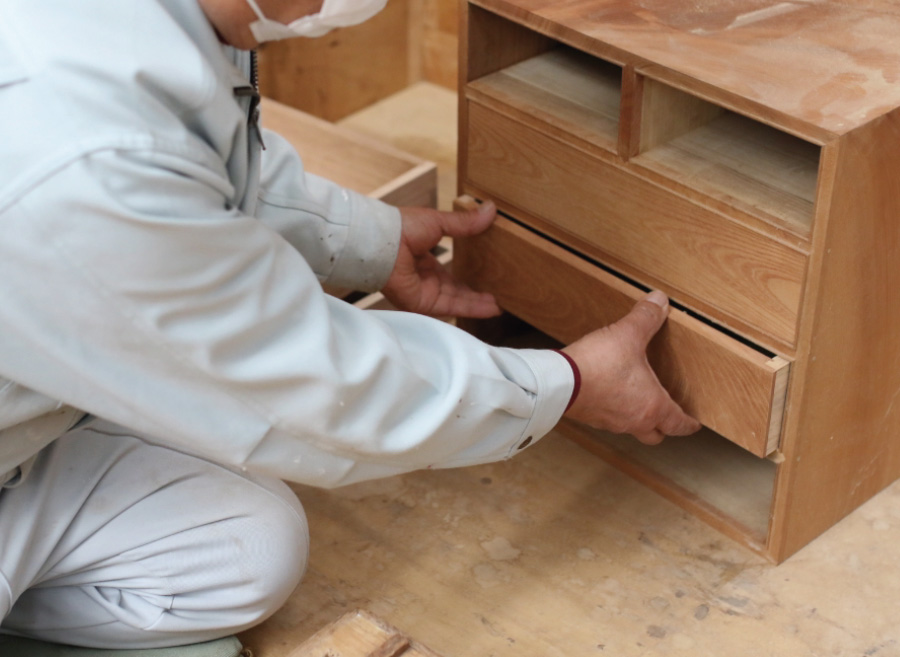
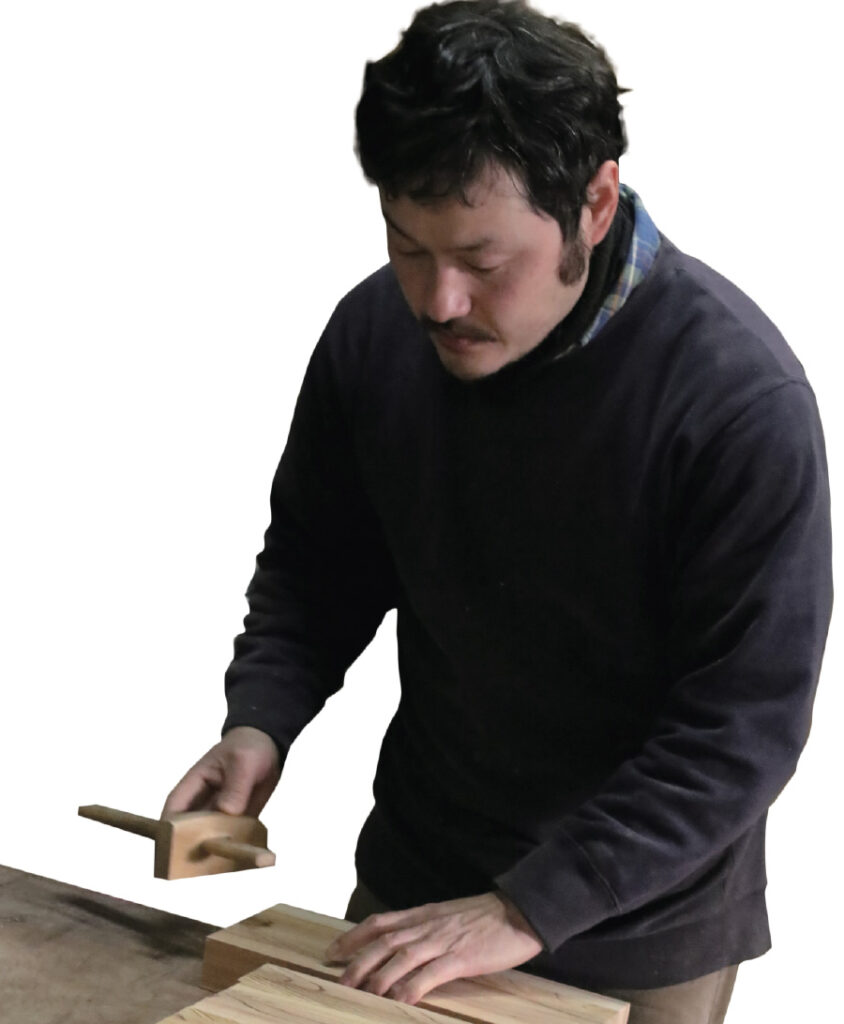
Craftsman File ③
Sashimono Artisan
Sashimono Artisan
Kibiki Furniture
Shuichi Sekiya
“I grew up surrounded by forests, and during school I learned how lack of forest thinning could worsen natural disasters. That sparked my interest in forestry and how to manage local woodlands. Eventually, I became interested in adding value to wood—and that’s how I discovered crafts. One thing led to another, and I was introduced to Sendai Tansu, which involves multiple artisans working together. My initial interest wasn’t so much in furniture, but in wood itself.
I try not to cling to strict ideals—instead, I adapt case by case. The one thing I’m firm on: I don’t use plywood or illegally sourced timber. I only use materials I can trace personally.
Each region has its own color and character. I like bringing that into my work. I often use chestnut wood—it’s easy to work with and has been used in Japan since the Jomon period, over 10,000 years ago. Even small logs can be used for things like chairs. I aim to support sustainable cycles—using local resources, nurturing forests, and building things that last.
Rather than getting hung up on tradition, I believe in making what’s needed in the present. That flexibility, I think, is what truly matters.”
I try not to cling to strict ideals—instead, I adapt case by case. The one thing I’m firm on: I don’t use plywood or illegally sourced timber. I only use materials I can trace personally.
Each region has its own color and character. I like bringing that into my work. I often use chestnut wood—it’s easy to work with and has been used in Japan since the Jomon period, over 10,000 years ago. Even small logs can be used for things like chairs. I aim to support sustainable cycles—using local resources, nurturing forests, and building things that last.
Rather than getting hung up on tradition, I believe in making what’s needed in the present. That flexibility, I think, is what truly matters.”
